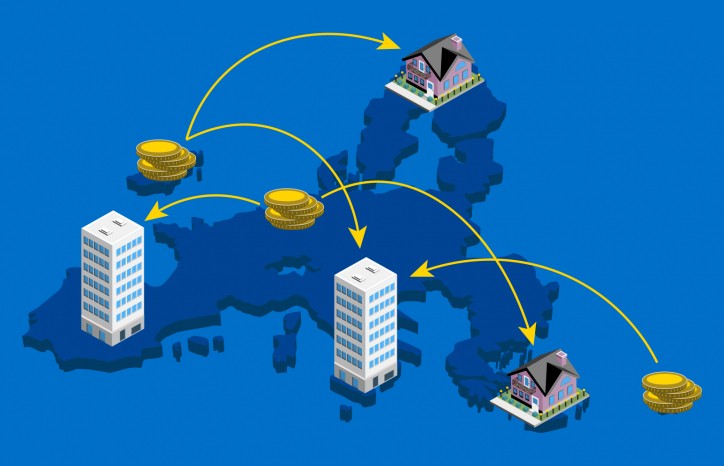
Illustrative photo.
Slow restructuring
As of 31 December 2019, the total state capital invested in 818 enterprises was VND 1,602,182 bn, an increase of 4% compared to 2018. In this amount, SOEs invested VND 1,425,050 bn and state enterprises invested VND 177,132 bn, while total assets reached VND 3,806,789 bn, an increase of 3% compared to the implementation in 2018. There were 85% enterprises making profit and 15% enterprises suffering losses or even breaking even. The total amount remitted to the state budget, of SOEs and enterprises with state capital, was VND 396,356 bn, an increase of 8% compared to 2018.
Total revenue of enterprises increased from VND 1,515,822 bn in 2016, to VND 1,656,124 bn in 2019, an increase of 9%. In this, average revenue per enterprise was VND 3,028 bn, and the average revenue growth rate of one enterprise in four years was 9.26%. Profit before tax of enterprises increased from VND 139,659 bn to VND 162,750 bn, up by 16.53%. The average profit per enterprise was VND 304 bn and the average profit growth of one enterprise in four years was 12.34%. The revenue of a number of enterprises with state shares and contributed capital in the form of joint-stock companies, increased from VND 423,251 bn in 2016 to VND 662,286 bn, up by 56.48%. In this, the average revenue per enterprise was VND 1,773 bn and the average revenue growth rate of one enterprise in four years was 9.32%.
In terms of equitization, in the 2016 to 2020 period, there were 180 enterprises approved by competent authorities for equitization plans, with total value of VND 443,503 bn, of which the value of state capital was VND 207,116 bn. However, only 37 out of 180 equitized enterprises were on the list according to Official Letter 991/Tg-DMDN and Decision 26/2019/QD-TTg of the Prime Minister, covering 28% of the plan.
In terms of divestment, in the period 2016-2020, state divested VND 25,749 bn, earning VND 173,103 bn. In particular, the state divestment in 103 units under Government Decision 1232/QD-TTg with a value of VND 4,966 bn, earned VND 9,647 bn, reaching 30% in quantity and 8% in value of the approved plan. The State divestment in non-portfolio companies was VND 3,785 bn, earning VND 110,392 bn, including withdrawing VND 3,436 bn and earning VND 109,965 bn at Sabeco, while state corporations withdrew VND 16,996 bn, earning VND 53,063 bn. In general, restructuring of SOEs, mainly in the form of equitization and divestment of state capital in enterprises, is still slow.
Role of capital market
This calls for the capital market in the 2021 to 2030 period to be strengthened in management and supervision for future development. The capital market operates openly and transparently, protecting the legitimate rights and interests of market participants; and improve competitiveness, according to international trends and practices. The capital market must gradually shift from quality-based stock market management to full disclosure; proceed to establish a specialized trading floor for SOEs; and diversify methods of pricing shares offered to the public.
Promoting the development of the corporate bond market to become an important market, together with the stock market, is the main purpose for production, business, and development of SOEs. It is necessary to establish a credit rating service market to promote SOE management, promote full governance in accordance with international practices and attach great importance to openness, transparency, and accountability to the people and society.
Thus, the capital market, of mainly stocks and bonds, will act as a source of capital to meet the requirements of time, volume, and price fees for SOEs. On the other hand, this is also a mirror that reflects the business results of enterprises, encourages enterprises to innovate in management, transparency of information, and enhance competitiveness.
Developing the capital market, mainly the stock market, also means promoting SOE restructuring in some aspects. Firstly, by contributing to promote SOEs to soon complete a transparent and clear corporate governance process, especially public companies with the state capital, it will boost the volume of transactions on the market, and increase the liquidity for state shareholders. This is a lingering problem in the majority of SOEs and is the cause of inefficiency in the management and use of state capital in investment, production, and business.
Secondly, by promoting SOEs to participate in capital mobilization in the direction of reducing the proportion of commercial credit loans, reducing pressure on domestic fee price increases and diversifying forms of capital mobilization.
In order to link the development of the capital market with the SOE restructuring roadmap for the period 2021 until 2025, it is necessary to implement many solutions synchronously. First of all, we need to continue to improve institutions and legal frameworks on the management and operations of SOEs, and on the arrangement, equitization, and divestment in accordance with Resolution 12-NQ/TW. Completing the policy on equitization of enterprises, in which the focus is on regulations on custody registration, trading, and listing on the stock market, we also need to pilot a number of SOEs, to register for trading and listing on regional and world stock markets.
Equitized enterprises that have not yet met the state capital ratio according to the classification criteria of SOEs must organize a plan and implement the divestment in accordance with the law, ensuring the proportion of state ownership. They must make public all information, with the exception of enterprises related to national defense and security.
























